Thank you for visiting! By the way… any links on this page that lead to products on Amazon and other stores/partners are affiliate links Aquarium Store Depot earns a commission if you make a purchase.
If you like nano fish as much as I do, then rasboras might be the perfect fish for your tank. From the ever-popular harlequin rasboras to the tiny dwarf rasboras there’s a species to suit just about any aquarium.
In this article, I’ll be introducing 11 great types of rasboras and giving you some great information about their care. Let’s dive right in!
What Are Rasboras?
Rasboras are freshwater fish from the Cyprinidae family. That family might sound familiar because it is the same group that includes other well-known aquarium fish like barbs, goldfish, and koi.
Many of the tiny species were originally placed in the Rasbora genus, butscientists have since split them up into a few different groups. Most of the species in the aquarium trade are from South and Southeast Asia where they live in streams, ponds, and lakes.
Rasboras are some of the smallest fish species known, and most aquarium species grow to just an inch or two in length. These fish are awesome in nano aquariums, and their peaceful temperaments and great colors have made them firm favorites among fishkeepers all over the world!
11 Best Types Of Rasboras For Aquariums
Now that you know a little bit more about rasboras, it’s time to meet 11 great species that you can keep! Below is a video from our YouTube channel. We go into more detail in the blog post below. If you enjoy our content, please make sure to subscribe!
I’ve included the most important information to help you choose the best species for your tank. Take note of the following stats for each species:
- Scientific Name
- Difficulty Level
- Temperament
- Adult Size
- Minimum Tank Size
- Diet
- Origin
- Temperature
- pH
- Difficulty to breed
- Planted tank suitability
So let’s get started!
1. Harlequin Rasbora
A peaceful schooling fish. An ideal community fish. A great beginner fish
- Scientific Name: Trigonostigma heteromorpha
- Difficulty Level: Easy
- Temperament: Very peaceful
- Adult Size: 1.5-1.75 inches
- Minimum Tank Size: 10 gallons (20 gallons recommended)
- Diet: Carnivorous, provide micropellets/flakes, live and frozen food
- Origin: Southeast Asia
- Temperature: 70-82°F
- pH: 5.5-7.5
- Difficulty to breed: Moderate
- Planted tank suitability: Yes
The Harlequin rasbora is an amazing schooling fish for community fish tanks. These fish have awesome black triangular markings on their sides, which contrasts with their golden orange color.
Harlequin rasboras are one of the most popular aquarium species sold today because they are so peaceful and easy to care for. Keep a group of 8 or more to see the natural schooling behavior of these neat little fish.
2. Dwarf Emerald
A colorful Rasbora fish that needs large numbers for its personality to really show. Needs at least a group of 10.
- Scientific Name: Celestichthys erythromicron
- Difficulty Level: Moderate
- Temperament: Peaceful
- Adult Size: 1 inch
- Minimum Tank Size: 10 gallons
- Diet: Omnivorous, feed micro pellets, and live/frozen food
- Origin: Myanmar
- Temperature: 68-75°F
- pH: 7.5-8
- Difficulty to breed: Moderate
- Planted tank suitability: Yes
The dwarf emerald rasbora (video source) is an awesome nano fish for cool water aquariums. They look very similar to galaxy rasboras/ celestial pearl danios and are actually pretty closely related. These tiny fish are really peaceful and don’t get much over an inch in size.
They are can be shy by nature but will be most comfortable and active in a well-planted aquarium. A group of 6 or more dwarf emerald rasboras would be great in a species-only nano tank, but they can also be kept with other peaceful fish of a similar size.
3. Chili Rasbora/ Mosquito
Use Promo Code ASDFLIPPROMO
A great nano schooling fish. Males display brighter colors. Best in groups of 6 or more
- Scientific Name: Boraras brigittae
- Difficulty Level: Moderate
- Temperament: Peaceful
- Adult Size: 0.75 inches
- Minimum Tank Size: 10 gallons
- Diet: Carnivorous, provide micropellets/flakes, live and frozen food
- Origin: Borneo
- Temperature: 68-82°F
- pH: 4-7
- Difficulty to breed: Moderate
- Planted tank suitability: Yes
Chili rasboras (video source) are one of the smallest fish species in the fishkeeping hobby and are also known as the mosquito rasbora. For such a small species, these little guys are really adaptable to different conditions, but they do need excellent water quality to thrive.
Chili rasbora fish do best when kept on their own but they can be kept with other small species that won’t out-compete them for food.
4. Blue Axelrodi
A small Rasbora fish that needs a lot of schooling mates to fully feel comfortable in an environment
- Scientific Name: Sundadanio axelrodi
- Difficulty Level: Moderate
- Temperament: Peaceful
- Adult Size: 0.75 inches
- Minimum Tank Size: 5 gallons
- Diet: Carnivorous, feed live/frozen food
- Origin: Indonesia, Borneo, Sumatra
- Temperature: 73-79°F
- pH: 4-6.5
- Difficulty to breed: advanced
- Planted tank suitability: Yes
The blue variety of the axelrodi rasbora (video source) is true schooling fish that should be kept in large groups of 20 or more to really shine.
These tiny fish don’t always accept prepared foods, so be sure to keep a supply of live or frozen foods like daphnia or grindal worms to keep them well-fed.
5. Spotted/ Dwarf
A timid-natured Rasbora that does great with shrimp and snails. Grows to just 1 inch in length
- Scientific Name: Boraras maculatus
- Difficulty Level: Easy
- Temperament: Peaceful
- Adult Size: 0.75-1 inch
- Minimum Tank Size: 10 gallons
- Diet: Carnivorous, provide micropellets/flakes, live and frozen food
- Origin: Southeast Asia
- Temperature: 68-82°F
- pH: 4-6.5
- Difficulty to breed: Moderate
- Planted tank suitability: Yes
The spotted, or dwarf rasbora (video source) is another tiny species that is just perfect for a planted nano tank. This colorful fish has a bright red gill cover and three black spots on its orange body.
The ideal tank mates for dwarf rasboras are shrimp, snails, and other peaceful nano fish. Keep at least ten of these social schooling fish to keep them confident and active.
6. Merah
- Scientific Name: Boraras merah
- Difficulty Level: Easy
- Temperament: Peaceful
- Adult Size: 0.75 inches
- Minimum Tank Size: 10 gallons
- Diet: Carnivorous, provide micropellets/flakes, live and frozen food
- Origin: Borneo
- Temperature: 68-82°F
- pH: 4-6.5
- Difficulty to breed: Moderate
- Planted tank suitability: Yes
The merah rasbora (video source) is another diminutive species for all the nano fish lovers out there! They are also known as the phoenix rasbora.
This species is very similar to the chili rasbora but is generally less colorful. Like other rasboras, these fish do best in groups because they prefer to school together.
7. Black Harlequin
A variant of the Harlequin Rasbora. Does best in large groups
- Scientific Name: Trigonostigma heteromorpha
- Difficulty Level: Easy
- Temperament: Very peaceful
- Adult Size: 1.5-1.75 inches
- Minimum Tank Size: 10 gallons
- Diet: Carnivorous, provide micropellets/flakes, live and frozen food
- Origin: Southeast Asia
- Temperature: 70-82°F
- pH: 5.5-7.5
- Difficulty to breed: Moderate
- Planted tank suitability: Yes
The black harlequin rasbora is a dark variant of the standard harlequin rasbora. This popular species has been a favorite amongst aquarists for over a century, and it’s easy to see why!
Black harlequin rasboras have the same care needs as the regular species.
8. Green Kubotai
A bright green-colored Rasbora fish. Looks best in dark substrate and lots of plants. A great community fish!
- Scientific Name: Microdevario kubotai
- Difficulty Level: Easy
- Temperament: Peaceful
- Adult Size: 0.75 inches
- Minimum Tank Size: 15 gallons
- Diet: Omnivorous, feed micro pellets, flakes, and live/frozen food
- Origin: Thailand, Myanmar
- Temperature: 68-80°F
- pH: 6-7
- Difficulty to breed: Moderate
- Planted tank suitability: Yes
The green kubotsai rasbora (video source) has an amazing neon green body color. These tiny shoaling fish are a perfect choice for a planted aquarium.
They can be kept in a species-only tank in groups of 8 or more, or as part of a peaceful nano community.
9. Exclamation Point
One of the smallest fish available in the hobby. Best in schools and easy to care for
- Scientific Name: Boraras urophthalmoides
- Difficulty Level: Easy
- Temperament: Peaceful
- Adult Size: 0.5-0.7 inches
- Minimum Tank Size: 10 gallon
- Diet: Carnivorous, provide micropellets/flakes, live and frozen food
- Origin: Vietnam, Cambodia, Thailand
- Temperature: 68-82°F
- pH: 6-7
- Difficulty to breed: Moderate
- Planted tank suitability: Yes
The exclamation point rasbora (video source) is another incredible nano fish from the Boraras genus. If the word Boraras sounds strangely familiar, that’s because this name is an anagram of the word rasbora.
The exclamation point is one of the smaller rasbora species that you would come across at just half an inch or so in length. It gets its name from the combination of a line and a dot on the fish’s body, which make a perfect exclamation point!
10. Emerald Eye
- Scientific Name: Brevibora dorsiocellata
- Difficulty Level: Easy
- Temperament: Peaceful
- Adult Size: 1.5 inches
- Minimum Tank Size: 10 gallons
- Diet: Carnivorous, provide micropellets/flakes, live and frozen food
- Origin: Thailand, Sumatra, Malaysia,
- Temperature: 68-77°F
- pH: 5-7.5
- Difficulty to breed: Moderate
- Planted tank suitability: Yes
The emerald eye rasbora is a great-looking schooling fish. These fish have beautiful iridescent green markings from their eyes right down to their tails.
These small rasboras are very peaceful and stay small, making them an ideal choice for a soft water community setup.
11. Scissortail

- Scientific Name: Rasbora trilineata
- Difficulty Level: Easy
- Temperament: Peaceful
- Adult Size: 6 inches
- Minimum Tank Size: 55 gallons
- Diet: Carnivorous, provide micropellets/flakes, live and frozen food
- Origin: Southeast Asia
- Temperature: 73-77°F
- pH: 6.5-7.5
- Difficulty to breed: Moderate
- Planted tank suitability: Yes
The scissortail rasbora grows to a size of 6 inches, making it a giant of the rasbora world! Scissortail rasboras get their name from the interesting way they twitch their caudal fin.
Like the other rasboras, these schooling fish do best in groups. Scissortail rasboras are a large and active species, so naturally, they need a fairly large tank to have enough room.
Other Species
Just in case 11 species wasn’t enough, here are a few more bonus rasboras that you can look out for!
- Galaxy rasbora/ Celestial pearl danio –Danio margaritatus
- Blackline rasbora-Rasbora borapetensis
- Clown rasbora-Rasbora kalochroma
- Brilliant rasbora- Rasbora einthovenii
Tank Setup
Rasboras make great nano fish for small aquariums. Even though they may be tiny, they tend to be very active fish, so a minimum tank size of about 10 gallons is recommended for most of the smaller species.
Substrate & Decor
Sand or gravel makes a fine substrate for most rasboras, although a complete aqua soil is often a better choice for planted tanks because rasboras do best in aquariums with abundant aquatic plant growth.
Adding some driftwood and plenty of live plants will help these fish feel more at home in the aquarium. Plants like Java ferns, cryptocorynes, and amazon swords are great choices because they are easy to grow and don’t need powerful lighting.
Editor's Choice
Manzanita offers it all. Great shape, low tannins, quick to water log and reasonably priced. It's the ultimate driftwood!
Lighting & Filtration
Specialized lighting is not necessary for your rasbora aquarium. While bright light is great for a planted tank, it’s not necessarily the best choice for these fish.
Most rasboras prefer fairly dim lighting in the aquarium. Growing some red root floaters or other species of floating plants is a good idea because it helps maintain the dim light these fish prefer.
Rasboras are small fish that prefer still or slow-flowing water. A simple sponge filter will provide adequate filtration for most species.
For a more compact and aesthetic option, a hang-on back or internal power filter can also be used. Just be sure to set up a prefilter sponge over the intake to prevent any tiny fish from getting sucked in.
The Best Internal Filter
The OASE Bioplus is an internal version of the Biomaster Therm. It's the only internal filter I trust in aquascapes
Whichever filter you prefer, make sure it is capable of excellent mechanical and biological filtration, especially if you are keeping your rasboras in a nano aquarium.
Care
Now that you know how to set up a great home for your fish, it’s time to learn how to keep them healthy. Rasboras are pretty easy to care for if you can maintain good water quality and feed them a quality diet. Choosing the right tankmates is also very important since these fish are so small.
Read on to learn about all of these things and more!
Aquarium maintenance
Most rasboras require great water quality, and that’s why regular aquarium maintenance is so important. This might not be everyone’s idea of a good time, but it’s really not such a bad deal.
Get into the habit of performing a partial water change every week, especially if you keep a nano aquarium. You can use your test kit to monitor the nitrate levels- that way you’ll know if you’re changing enough water.
Use a gravel vacuum to suck out any solid waste particles from the substrate and give your aquarium glass a good clean with your algae scraper. Once you’re done, you can sit back and admire a beautiful tank with happy rasboras for the rest of the week!
Behavior & Feeding
Most species of rasboras available in the aquarium trade are considered micro predators. In their natural freshwater habitats, they feed on tiny crustaceans and other invertebrates.
In the home aquarium, these fish prefer to feed on frozen and live foods like brine shrimp and daphnia. Most species will feed on dried foods like fish flakes and tropical granules, however. A good food to try is Xtreme Aquatic Foods Nano formula.
Xtreme Aquatics Nano formula is specially designed for smaller fish and contained a well balance mix of raw ingredients. It is a great staple food for your nano fish.
Breeding
Breeding rasboras is not very difficult. In fact, healthy adult fish will breed freely in many home aquariums. These fish produce eggs on a regular basis, so don’t be too surprised if you see some tiny fry in your tank!
Rasboras aren’t that big on eating eggs, but there are no guarantees that the eggs will be left to hatch. Fortunately, the eggs hatch after just a day or so, and the fry begin swimming 2 or 3 days after that. They will have the best chance of survival if your tank is heavily planted, and contains only rasboras.
Setting up a small breeding tank will give you a much higher success rate. A small tank with a sponge filter, some floating plants, and some broadleaved plants is ideal for this purpose. Place a conditioned pair into the tank and, with some luck, the female will lay some eggs on the underside of a leaf.
After the pair have finished breeding, they should be moved back to their regular display tank. The fry grow very fast but must be fed on tiny food like infusoria until they are able to progress to baby brine shrimp.
Tankmates
Rasboras make great fish for community tanks because they are so peaceful. Most rasbora species will get along perfectly with similarly sized community nano fish, as long as they all enjoy the same water parameters.
Let’s take a look at some ideal tank mates:
- Smaller species of corydoras catfish
- Kuhli loaches and other small peaceful loaches
- Dwarf gouramis
- Cardinal tetras
The smallest species from the Boraras genus tend to do best in a species-only tank. They can, however, be kept with inverts like:
- Adults of most species of dwarf freshwater shrimp
- Aquarium snails
Where to Buy
Some of the different rasbora species are very common in the aquarium trade. Your local fish store probably sells a few popular species, and it’s always worth asking if they can track down something they don’t have in stock.
These days the greatest selection of species can be found online. Quality retailers like Flipaquatics.com are worth checking out because they stock a wide range of great nano fish.
FAQs
Will different they school together?
Rasboras are peaceful, social fish that will enjoy schooling with other, similar-sized species. It is best to keep at least 6 individuals of each species in your aquarium, even though your different rasboras will probably school together.
Is a rasbora a tetra?
Rasboras and tetras are both small schooling fish, but they are not actually related. Most tetras come from South America, while rasboras come from South and Southeast Asia.
What type of fish is a rasbora?
Rasboras are freshwater fish from the cyprinid family. They are mostly very small schooling fish that feed on tiny organisms.
What is the smallest?
The exclamation point rasbora (Boraras urophthalmoides) is the smallest rasbora species you are likely to find in the aquarium hobby. There is an even smaller species, however. The closely related Boraras micros maxes out at just half an inch long!
Can different types live together?
You can keep different species of rasboras in the same tank. Make sure that the different rasboras enjoy the same water parameters like pH and temperature, however.
The different Boraras species are closely related and might hybridize together. Avoid keeping them in the same tank, especially if you plan on breeding your fish.
Final Thoughts
Rasboras are probably the best nano schooling fish in the aquarium hobby. These fish are small, peaceful, colorful, and pretty easy to care for. If you’re looking for a fish to put into a planted nano tank, look no further!
Which is your favorite rasbora species? Let me know in the comments below!
- About the Author
- Latest Posts
I’m thrilled that you found Aquarium Store Depot! Here you’ll find information on fish, aquariums, and all things aquatics related. I’m a hobbyist (being doing this since I was 11) and here to help other hobbyists thrive with their aquariums! I adhere to a high quality Editorial Process and Review products with real life field usage and practical analysis.


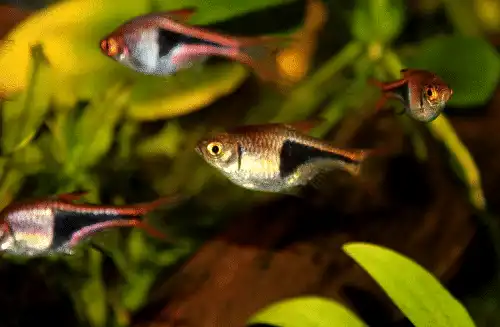
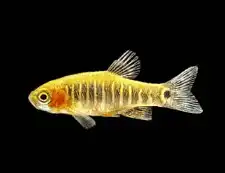
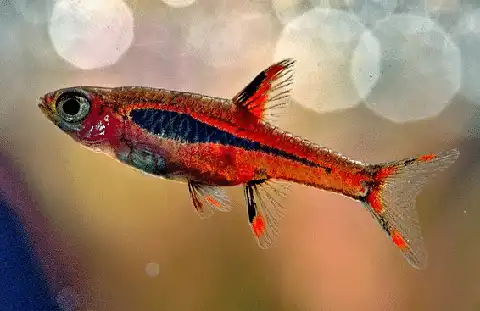


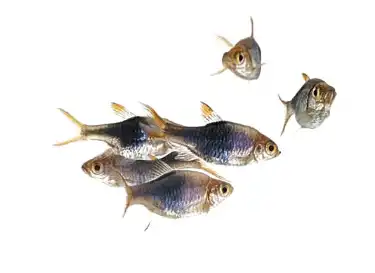

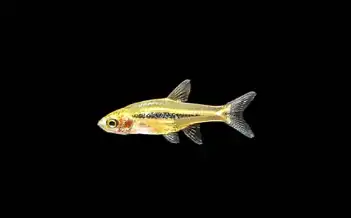

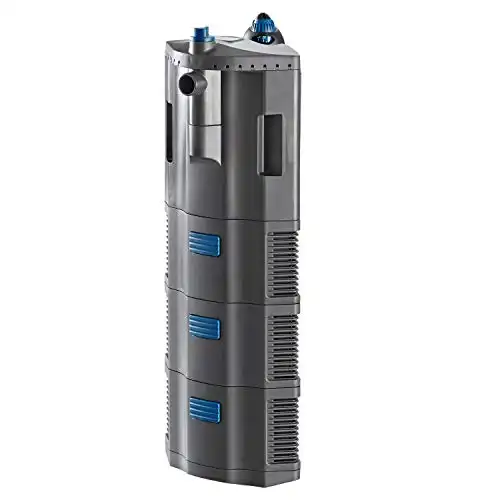





Just added 4 Harlequin Rasboras to my tank and I am in love..such a delightful fish…I am going back for 4 more this week.
That’s great to hear :). I love hearing about folks growing in the hobby.
This site has quite some information mixed up.
Harlequin Rasboras (true Trigonostigma heteromorpha) for sure should not be kept in 10G. They grow to 4.5cm unlike the other Trigonostigmas that grow to about 3 maximum.
I like that the Boraras species are recommended to go in min 10G (they’re half the size of Harlequins).
The photo of B. merah is actually showing B. brigittae. The photo for the Emerald Eye Rasbora is showing a Sparkling Gourami. Wth? Multiple other issues. B. micros is actually smaller than B. urophthalmoides but you could argue it’s not often available in the trade.
Anyway, nice overview.
Thanks Alex. I updated the info